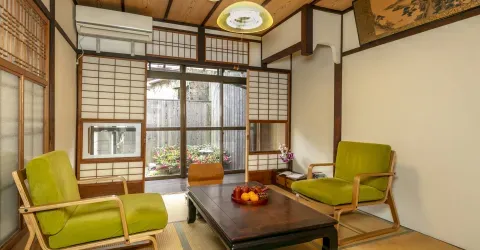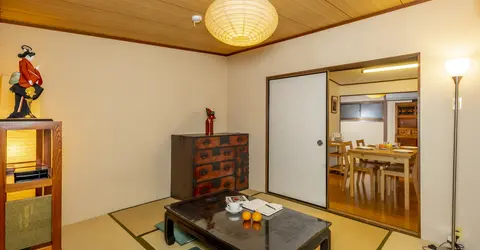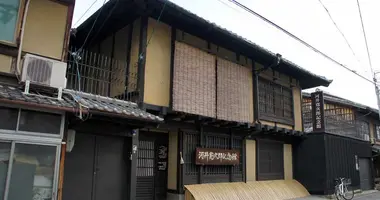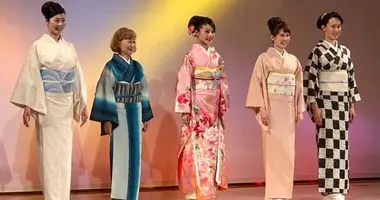The Kyoto Costume Museum 風俗博物館
- Published on : 18/12/2018
- by : J.R.
- Youtube
A dollhouse museum
If you're interested in the history of Japanese costumes and textiles, the Kyoto Costume Museum is a worthwhile visit. Models and dolls dressed in kimonos illustrate history over time.
Opened in 1974, Kyoto's small costume museum is a special, rather original visit. The museum will appeal to lovers of history and traditional textiles. The museum chooses to stage costumes from the Heian period (794–1185) using 1/4 scale models and dolls . The rooms therefore present different aspects of the culture and life of the time, such as religious rituals, leisure, the interior of houses...
Heian period costumes
In October 1998, the Costume Museum opened a new display: the Rokujyo-in Spring Palace . It is a palace present in the Tale of Genji , a famous literary work written by Murasaki Shikibu in the 11th century. To present the costumes and the life of the nobility of the Heian period in a more playful way, the dressed dolls are thus staged using the Tale of Genji as a background. The Juni-hitoe (the ceremonial role of court ladies) and period furniture are faithfully reproduced and placed in the halls of the palace. Part of a piece is even reproduced in real scale . All silk kimonos have been made in accordance with ancestral techniques and correspond to period costumes.
In the rooms of this replica of a period palace, the mannequins allow the visitor to better understand court life at that time , more than a millennium ago. Pay attention to the details: you can see women there playing go or sugoroku (Japanese backgammon), and getting down to their beauty rituals. Other characters make clothes: dyeing, sewing, perfuming fabrics, everything is illustrated. All these details are very realistic for a better immersion of the visitor. You can even try on a kimono for free and have your picture taken near one of the dolls!
To read: The Genji Museum in Kyoto
Part of the museum also shows some full-size costumes on mannequins, allowing them to be observed up close. This presentation traces the costumes of all eras since the Jomon period (11,000 years BC - 400 years BC), and allows you to realize the evolution of clothes and hairstyles in time.

The rooms of the museum
Flickr Shih Chi Chiang
Scenes from novels
In addition to the display of Heian period costumes, some of the dolls in the halls depict scenes from novels as well as picture scrolls .
Thus, you will be able to admire beautiful reconstructions of scenes taken from the "Bedside Notes" of Sei Shonagon, lady-in- waiting to Empress Teishi, written in the 11th century. The "Tale of the Bamboo Cutter", considered to be the oldest fictional text in Japan and dating from the 10th century, also benefits from a magnificent staging. Indeed, at the end of this tale, the heroine, a princess descended from the Moon, returns to her kingdom. This scene is represented using models, dolls and hanging clouds... This tale being prior to the Heian period, the costumes have been adapted to represent those of the time.
To discover: 5 famous Japanese legends
Processions illustrating the Gion Goryo-e festival (ancestor of today's Gion Matsuri ) and the Tanabata (star festival) show the nobles of the time parading on horseback and their servants pulling decorated chariots...
In addition, a lot of detailed information is provided in English to help understand each scene.
Finally, it should be noted that the museum is closed for works until February 3, 2019 .
Address, timetable & access
Address
Phone
+81 (0)75-342-5345Timetable
Get off at Line 9 "Nishi Honganji-mae" bus stopPrice
Adult: 500 yen (3€90)Child: 200 yen (1€50)Access
Open Monday to Saturday 10 a.m. to 5 p.m.Website
http://www.iz2.or.jp/english/index.htm




































